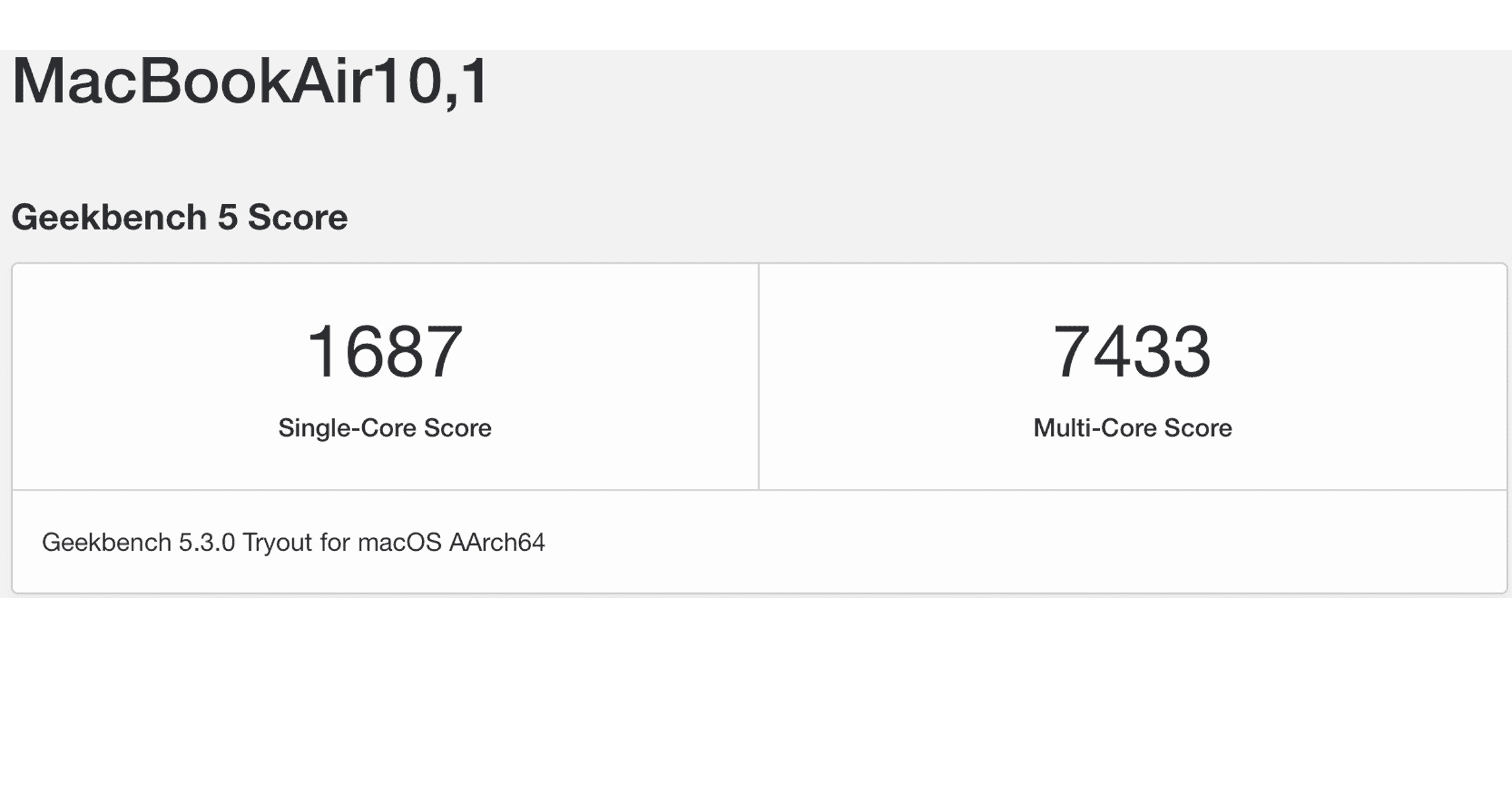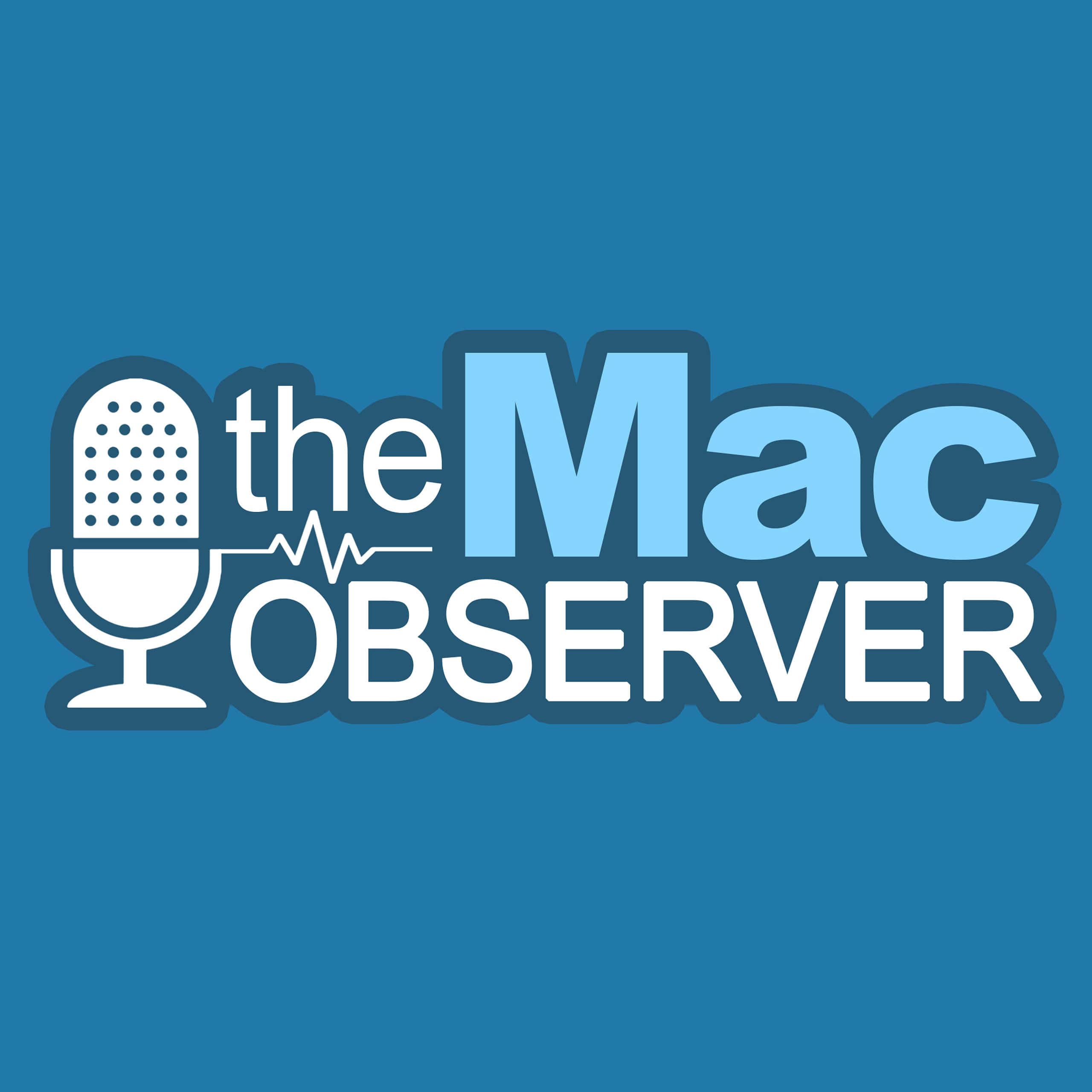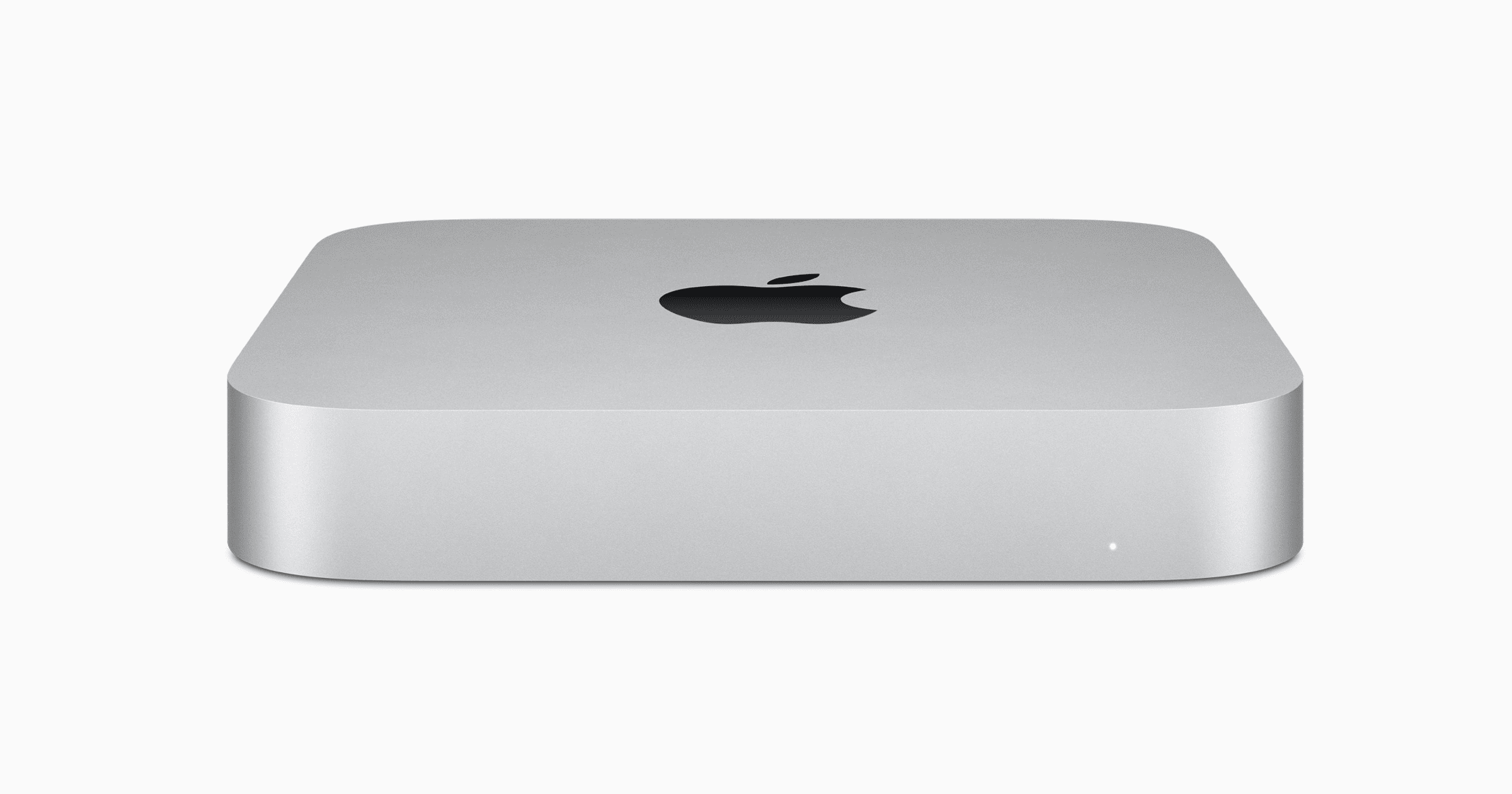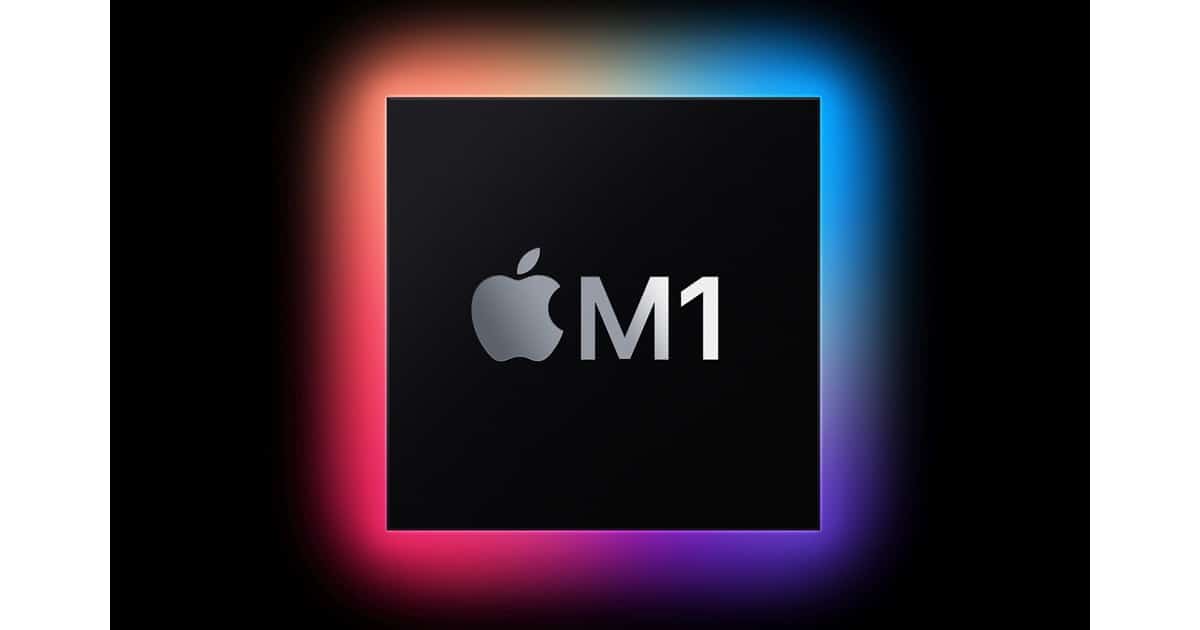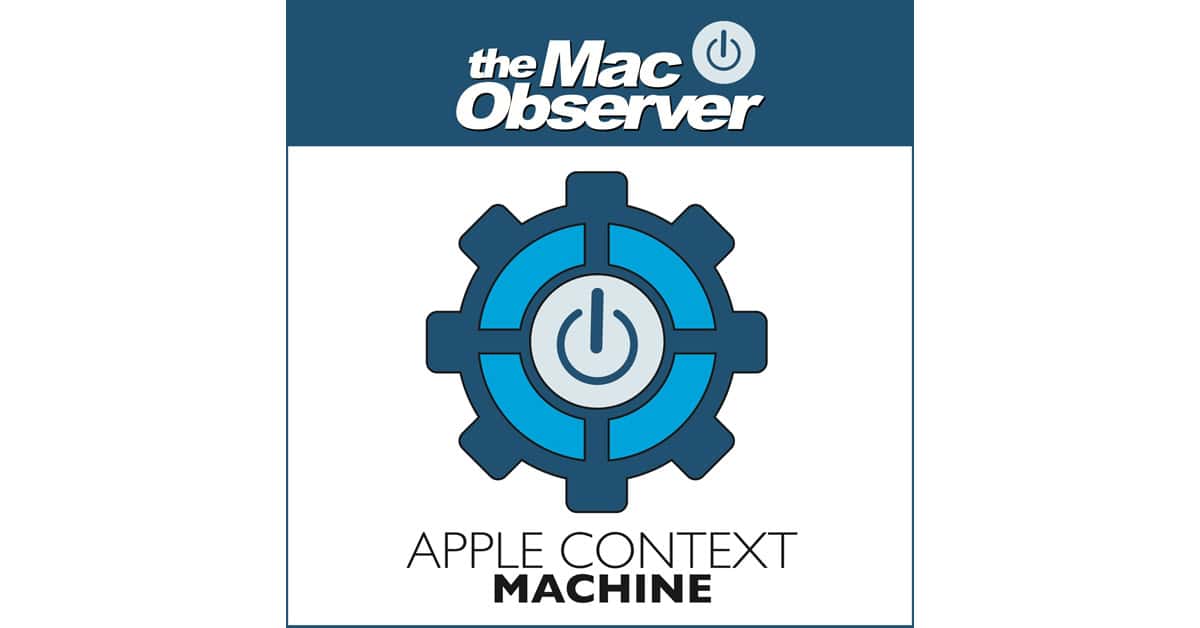Before taking the plunge and buying a new Mac with the M1 chip, you may want to ensure your apps are Apple Silicon compatible. Here’s how.
Apple Silicon
Big Sur, Apple Outages, and Thunderbolt 4 Explained — Mac Geek Gab 844
There’s been a lot of confusion this week, beginning with what “Thunderbolt 4” really means for us Mac users. Thankfully OWC’s Larry O’Connor was able to join John and Dave this week to explain. That’s not all you get, though. Your two favorite geeks carry on with advice about Big Sur, more M1 thoughts, and simply answers to all your questions about everything Mac, Apple, and technological. Press play and enjoy learning at least five new things!
The First Benchmark Scores for MacBook Air and MacBook Pro With M1 Chip. And They're Impressive.
The first benchmark scores for Macs containing the M1 chips are emerging and they show the newcomers outperforming Intel-based devices.
It's 99.99% Not Playing The Harp – TMO Daily Observations 2020-11-12
Today Kelly is joined by OmniGroup CEO/Founder Ken Case to talk about the prep work needed for new hardware and impending software from Apple.
M1 Knowns and Unknowns – TMO Daily Observations 2020-11-11
John Martellaro and Dave Hamilton join host Kelly Guimont to discuss what we know about Apple Silicon, aka M1. And also what we don’t know!
Why The New Mac mini and M1 Chip is a Big Deal For Hollywood
Apple put creativity front and center when unveiling its new products on Tuesday. The Hollywood Reporter found that many in the film and creative industries are excited about the possibilities of the Mac mini with it’s new M1 chip.
Veteran editor Harry B. Miller III says the new Mac minis in particular “could be huge” for the editing community. “Most of the editing industry is either on old cheese-grater or trashcan Macs. It seems to me the Mac mini with this new chip could easily and fairly cheaply replace all those old units,” he says. “Fox Studios, for example, had been refurbishing cheese-graters to keep them up to date with CPU’s and memory for more complex workflows. It would now be cheaper to replace them with the new Mini.” Miller says he plans to buy one. “I’ve used a Mini for the past 18 months for Avid [Media Composer] and [Adobe] Premiere Pro work on all my projects,” he notes. “Because of the pandemic, I know there have been a lot of equipment investments into iMacs for remote work. I could see the Mini’s replacing them as well.”
Apple Silicon Now Has a Name: M1. And It's Impressive
Ever since WWDC 2020 we’ve wondered how Apple would brand its “Apple Silicon” chip for the Mac. Now we know, and it’s amazing.
Which M1 Mac Should I Order? — Mac Geek Gab 843
Apple announced their M1 Macs today, the first Macs made with Apple Silicon chips. Join Dave and John as they dig into the specs to find out what the differences — and similarities — are between these models, helping you decide which one to order. Press play… and don’t get caught!
Chip Chat with John "M1" Martellaro – TMO Daily Observations 2020-11-10
Today Charlotte Henry and John Martellaro join host Kelly Guimont to discuss the “One More Thing” event, Apple Silicon, and imminent purchases.
Apple Silicon Could Lead to Lower-Cost Macs, Predicts Top Analyst
Apple will host its ‘One More Thing’ event on Tuesday, at which the first Apple silicon macs are expected to be unveiled. In a new note to investors, JP Morgan analyst Samik Chatterjee became the latest to predict that the shift may result in lower-cost Macs.
“With the move to in-house capabilities, Apple is looking to regain control over the pace of the technology roadmap on the processor chips, and create a common architecture across all Apple products, making it easier for developers to write and optimize applications for the product ecosystem,” the analyst writes. For consumers, Chatterjee believes that a lower bill of materials cost with a new Apple Silicon chip could lead to Mac devices with a lower price point targeting a wider market. More specifically, the analyst contends that Apple could release an SKU with a price point between that of the MacBook Pro and the MacBook Air. The analyst estimates a standalone market opportunity of 10 to 15 million unit volume for the new Mac device, with a starting average selling price (ASP) of $1,000. That implies about a $15 billion opportunity for Apple, “which will assure multi-year growth in a lackluster PC market.”
To Silicon or Not to Silicon – TMO Daily Observations 2020-11-03
John Martellaro and Dave Hamilton join host Kelly Guimont to discuss Apple’s (likely) Apple Silicon Mac announcement and whether to buy one.
Apple to Hold 'One More Thing' Event on November 10, 2020
Apple will host another event on November 10, 2020, called ‘One More Thing’, with Apple Silicon devices expected to be unveiled.
MacBook Air's Numbered Days – TMO Daily Observations 2020-09-28
Bryan Chaffin and John Martellaro join host Kelly Guimont to discuss the MacBook Air and where it fits in the new world of Apple Silicon.
First Apple Silicon MacBook Pro Coming at ’Time Flies’ Event
We continue to wait for the first Apple Silicon MacBook to be unveiled. We just might see it at the “Time Flies” event on September 15.
Apple Silicon Mac Mini, Streaming Subscription Data – TMO Daily Observations 2020-09-02
Charlotte Henry and John Martellaro join host Kelly Guimont to discuss the Apple Silicon Mac mini, and streaming subscription overlap.
Apple Silicon Ruminations – TMO Daily Observations 2020-08-31
John Martellaro and Jeff Butts join host Kelly Guimont to discuss the transition to Apple Silicon and what we might learn from Apple history.
First Apple Silicon MacBook Coming in 2020
If you’re anxiously awaiting the first Apple Silicon MacBook, your wait might only be until the end of the year.
Physics Professor Dr. Brad Marston - BGM Interview
Dr. Brad Marston is a professor of physics at Brown University and Associate Director of the Brown Theoretical Physics Center. A graduate of Caltech, he received his Ph.D. from Princeton University and did postdoctoral work at Cornell University. Brad is an Alfred P. Sloan Fellow and is also an Apple developer.
Brad and I chatted about his computational and theoretical physics career. At Caltech, he attended physics classes taught by two of his heroes, the legendary physicists Dr. Richard Feynman and Dr. Kip Thorne. There, he developed his interest in quantum physics and computational models. Later, when he left Sun workstations behind, he adopted the UNIX-based Mac and Xcode as his tools of choice. That’s what he used to build his visual climate model, GCM, already compiled for Apple Silicon. Tune in and geek out with me and this amazing physicist and Mac guru.
Apple Music on Android, Apple Silicon and Trackpads – TMO Daily Observations 2020-08-10
John Martellaro and Jeff Butts join host Kelly Guimont to discuss Apple Music on Android, and the trackpad possibilities of Apple Silicon.
Apple Silicon Pricing, Oprah's Conversations – TMO Daily Observations 2020-08-03
Charlotte Henry and John Martellaro join host Kelly Guimont to discuss rumors of Apple Silicon pricing, and The Oprah Conversation’s debut.
Partner, Many Tricks Software Rob Griffiths - BGM Interview
Rob Griffiths worked for Apple (1990-95), founded macosxhints.com in 2000, went on to write for Macworld Magazine, has done some podcasting, and is currently a partner at Many Tricks Software, makers of great Mac utilities such as Moom, Witch and Name Mangler.
Rob recalled his early years with the T.I. Silent 700, Commodore PET, and Apple II. At Colorado State University, Rob realized programming was not for him and followed a business track. Later, after graduate school, he landed a job with Apple. We chatted about his career, moving on to great years at Macworld Magazine, and then his current partnership at Many Tricks Software. We then delved into WWDC 2020, challenges as an Apple developer, the transition of Macs to Apple Silicon, and the evolution of macOS as a partial touch-screen OS. Good stuff here!
Apple Silicon, Target Mode, iOS Apps Coming to Mac, with John Kheit - ACM 533
Bryan Chaffin is joined by John Kheit to talk about Apple Silicon and the Mac moving to Apple-designed ARM processors. They also talk about Target Mode’s demise and something John Kheit predicted years ago: iOS apps coming to the Mac.
About Intel and Moving Macs to Apple Silicon – TMO Daily Observations 2020-07-01
John Martellaro joins guest-host Bryan Chaffin to discuss what may have driven Apple’s timeline for moving its Mac computers to Apple silicon.
WWDC Deep Dive – Mac Geek Gab 821
Dave Hamilton and John F. Braun share their thoughts and experiences with the new technologies Apple announced at WWDC this week.

